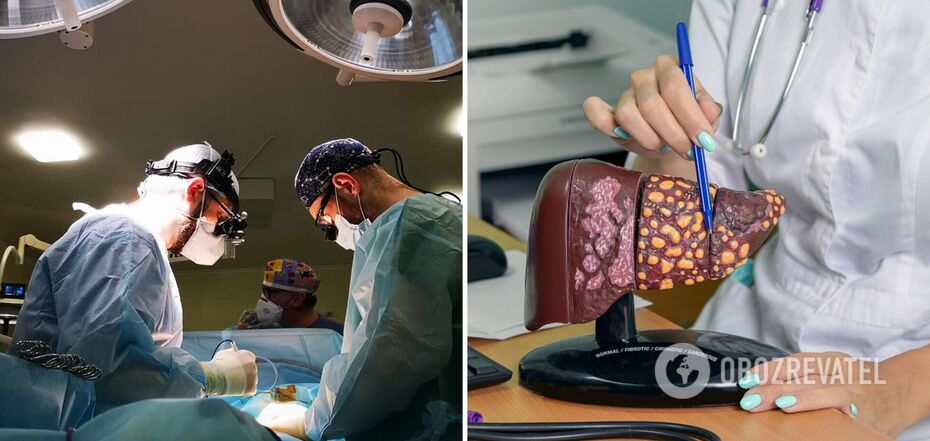Society
Doctors are close to growing a new liver in the human body: the method will be revolutionary
The United States is close to discovering a revolutionary method of growing new livers inside humans in lymph nodes. It has already been tested on mice, pigs and dogs. Clinical trials involving volunteers will take place in the coming weeks.
This was reported by Technology Review. LyGenesis is engaged in the development and testing.
For more than 10 years, American doctors and scientists have been trying to find a way to save people with liver disease who need a transplant. Unfortunately, 10% of all patients die without waiting for a donor. That's why the doctors came up with the idea to move away from organ transplants and create something completely different.
Eric Lagasse, a leading specialist at the company, and his colleagues suggested many years ago that if healthy liver cells were introduced into a diseased liver, they would begin to repair the damaged organ and help in treatment.
The first experiments were conducted on mice. However, it was very difficult to find livers in such small animals. Therefore, Lagasse injected the cells into the spleen of rodents and observed how they were transported to the diseased organ.
Later, doctors tried to transplant the cells into other places in the mice's bodies. But not all of the subjects survived. When the scientists performed an autopsy on the dead rodents, they were shocked by what they saw.
"I was very surprised. We had a mini-liver in place of a lymph node," Lagasse recalls.
Doctors began to study this phenomenon. As it turned out, lymph nodes are a wonderful "mini-incubator" inside people, capable of growing new small organs and relieving the burden on diseased parts of the body.
After a series of studies, Lagasse, together with entrepreneur and drug developer Michael Hufford and transplant surgeon Paulo Fontes, founded LyGenesis to take the technology further. The team of professionals began to explore the possibility of using lymph nodes to grow new thymuses, kidneys and pancreas. But the priority remains the liver.
An important discovery was that a new organ does not grow indefinitely. The body has a self-regulator that controls this process. Separately, doctors have found that only part of the injected cells remain in the lymph nodes and begin to grow, while the rest are transported to the liver on their own and help it recover.
Animal studies have proven the undeniable effectiveness of this method. They showed that within 3 months after the procedure, mice, pigs and dogs fully recovered.
"The lymph node disappears completely, and you are left with a highly vascularised miniature liver that supports the function of the local liver by helping to filter the animal's blood supply. This is exactly what we want to do in humans now," explains Hufford.
In the coming weeks, LyGenesis plans to test its treatment in 12 adults with end-stage liver disease who are medically ineligible for transplantation. According to doctors, they may not survive such a serious intervention as an organ transplant. Therefore, the use of a minimally invasive method can be life-saving for them.
The transplantation will use cells from a healthy liver, which cannot be used in a full transplant for a number of reasons. In particular, it may be damaged at the time of the donor's death.
"Using these organs, which are otherwise discarded, to help patients is revolutionary," the company explains. The doctors add that one such organ is enough for 75 procedures.
The first volunteer to agree to participate in the trial will receive 50 million cells. This is an incredibly small dose that minimises all possible adverse reactions. The second patient will undergo the procedure a week after the first.
Volunteers numbered 5-8 will receive an increased dose. The last four patients will receive 250 million cells each.
"Each patient will be studied throughout the year. We hope to complete the study in just under two years," Gafford said.
As OBOZREVATEL previously reported, Komarovsky said that Ukraine should solve the problem with prosthetics and explained how to do it.
Only verified information is available in our Obozrevatel Telegram channel and Viber. Do not fall for fakes!



























